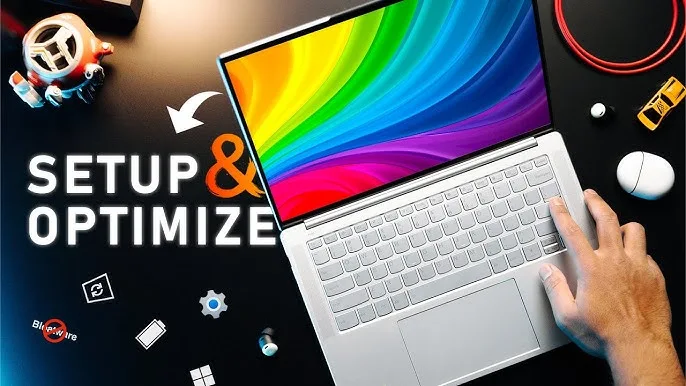If your laptop's speed has decreased, you're not alone. A slow system, lagging performance, or extended boot-up times can be incredibly frustrating.
The good news? You can increase the speed of your laptop without installing any third-party software. Follow these steps carefully, and by the end, your system will run like it's brand new.
Let’s get started!
Why Is My Laptop Running Slow?
If your system is running very slowly, the performance of your computer might be hampered by the following factors:
- Accumulation of junk and temporary files
- Unnecessary startup programs
- Browser issues or corrupted cookies
- Potential malware or spyware infections
Let’s tackle these issues one by one with simple and effective solutions.
Step-by-Step Guide to Increase the Speed of Laptop
1. Clean Junk and Temporary Files
The first step is clearing out unnecessary files stored on your system.
- Open the Run dialog by pressing Windows + R or right-clicking the Start menu and selecting Run.
- Type
cleanmgrand hit Enter. - The Disk Cleanup utility will appear. Check all the boxes for items like temporary files, recycle bin content, etc.
- If there’s important data in your recycle bin, save it elsewhere first.
- Click "OK" and confirm by selecting "Delete Files."
Junk files can occupy gigabytes of storage, and clearing them significantly improves performance.
2. Remove Temporary Files from Windows Temp Folders
Now, clear temporary files manually.
- Open the Run dialog again and type
temp, then press Enter. - Select all files (Ctrl + A) and delete them permanently using Shift + Delete.
- Don’t worry if some files can’t be deleted; just skip them.
Next, do the same for another temp folder:
- Open Run and type
%temp%. - Again, select all files, press Shift + Delete, and skip any undeletable files.
These actions remove temporary data generated by apps and processes.
3. Reset Browsers and Optimize Internet Settings
Browser issues, such as slow performance or pop-ups, might also affect your laptop's speed.
- Open Run and type
inetcpl.cpl, then hit Enter. - In the Internet Options menu, go to Connections > LAN Settings. Ensure "Automatically detect settings" is selected and uncheck any proxies.
- Next, go to the Advanced tab, click "Restore advanced settings," and select "Reset."
- Choose the "Delete personal settings" option to remove corrupted cookies and cache.
Restart your browser, and it should run smoother.
4. Manage Startup Applications
Too many programs or applications launching at startup can slow down your system.
- Right-click the Start menu and open Task Manager.
- Navigate to the Startup tab.
- Disable unnecessary applications by right-clicking them and selecting Disable.
Only leave essential programs enabled (e.g., security software). Applications like Photoshop can be manually opened when needed rather than running at startup.
5. Perform Malware and Adware Scans
If your laptop is plagued by pop-ups, strange ads, or suspicious programs, malware could be the culprit. Here’s how to clean it:
- Download and install Malwarebytes (a trusted anti-malware software). Run a full system scan and delete any detected threats.
- Uninstall Malwarebytes after use to free up system resources.
- Optionally, use SuperAntiSpyware to remove any additional adware.
These tools are free and widely trusted by users.
6. Clear Prefetch Files
Prefetch files are cached data created by Windows to speed up frequently accessed files and apps. Clearing these can improve performance:
- Open Run and type
prefetch, then press Enter. - Click "Continue" if prompted for permission.
- Delete all files in this folder.
Final Restart and Optimization
After following these steps, restart your laptop. You should notice a significant improvement in speed and performance.
Conclusion
By following this guide, you’ve cleared junk files, optimized startup programs, reset browser settings, and eliminated potential malware—all key steps to increase the speed of your laptop.
Feel free to share this guide with friends or family who face similar issues. Don’t forget to like and subscribe to support more helpful content. See you next time!






* Please Don't Spam Here. All the Comments are Reviewed by Admin.